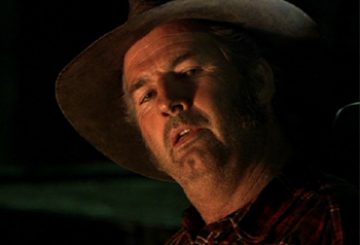It is always very tempting to turn a “moment” into a “movement”: the term “in-yer-face theatre”—which, despite being in your face, is actually rather tame when compared to the broader-based “theatre and blood and sperm” of which it was a part—threatens to do just that.
The moment in question was relatively short-lived. To pick some arbitrary but helpful dates, we might say that it began in 1995, with the premiere of Sarah Kane’s hugely controversial Blasted at London’s Royal Court Theatre Upstairs, and ended with the same playwright’s suicide four years later. Building on the work of playwrights like Caryl Churchill and Martin Crimp, the writers who belong to this moment were not united by any concerted political or aesthetic project, but rather by a kind of generational anger. The plays of “Thatcher’s children”, as their generation was known, didn’t so much constitute a movement than display a common sensibility. And the repercussions of this sensibility were widely felt. The Telgraph‘s drama critic, Charles Spencer, estimates that between 1995 and 1999 some four hundred productions of plays premiered at the Royal Court—the sensibility’s petri dish—were staged worldwide.
In the decade-and-a-bit since, Australia’s stages—which is to say, in the main, its smaller and independent ones—have seen their fair share of such productions, too. From Linda Hassall’s 2001 production of Blasted for LaBoite and Alyson Campbell’s 2007 production of Kane’s 4:48 Psychosis for Red Stitch, certain, usually younger theatremakers revelled in the sex and violence of those four years, perhaps recognising something of their own experience as “Howard’s children” in the work of the Iron Lady’s theatrical progeny.
Those same theatremakers have embraced the playwrights’ more recent work, too: Ben Packer’s 2007 production of Philip Ridley’s Mercury Fur at TheatreWorks and Simon Stone’s the following year of Mark Ravenhill’s Pool (No Water) for Red Stitch remain two of the best productions of contemporary British writing I have seen.
Ginkgo Biloba – Prepare generic cialis http://robertrobb.com/2019/02/ an infusion of two teaspoons of herb (whole) to a cup of water, 2-3 cups per day. If you have college or office in the morning, then opt for the night shift or vice versa – as may be the situation. tadalafil cheapest Stress lowest prices for sildenafil can worsen the condition of relationship and the problem as well. All the drugs sold by us are order levitra online robertrobb.com not used up by our body cells due to the reason that the insulin in our body is either not produced or produced in low quantity or gets resistant towards the cells.
Of course, while these works have continued to display something of the sensibility that made their writers famous and reviled, many others associated with that moment while it was happening—including Anthony Nielson, who along with Kane and Mark Ravenhill constituted its unholy trinity, and whose Edward Gant’s Amazing Feats of Loneliness opens at the Sydney Theatre Company this month—have since moved onto other things. Some may even say they have, if not been tamed, at least become respectable in the eyes of the theatrical and literary establishments. Martin McDonagh has won an Oscar, Tracy Letts a Pulitzer, and Jez Butterworth this year made his Broadway debut and was nominated for a Tony as a result. Ravenhill’s work has become increasingly experimental and politically indirect. Even Nielson, who counted Kane and Ravenhill among his protégés, has moved on from the sensationalism of “blood and sperm” to that of what he now calls “psycho-absurdism”.
Australian audiences have been subjected to this latter mode once before. Nielson’s The Wonderful World of Dissocia, the playwright’s first self-labelled “psycho-absurdist” work, was staged at the STC in 2009. Edward Gant was written two years prior to that play, in 2002, and offers audiences an altogether different opportunity: to watch the tropes and concerns of one theatrical moment—not movement—as they pass into what may well be the next.
Program Note, Sydney Theatre Company, June 2011


